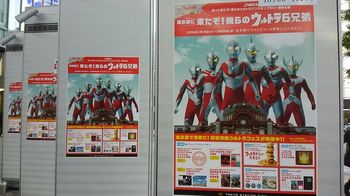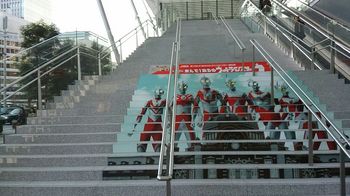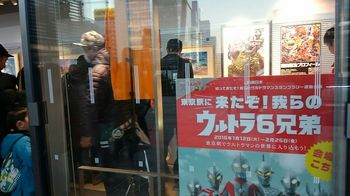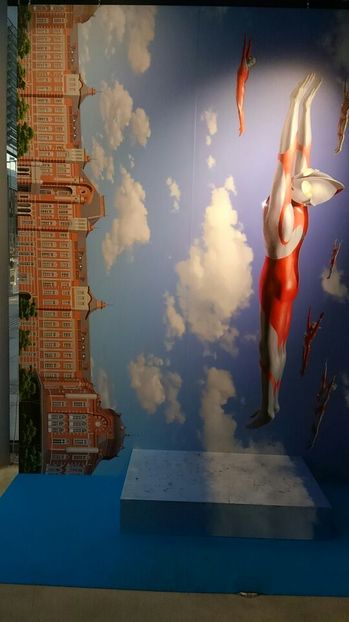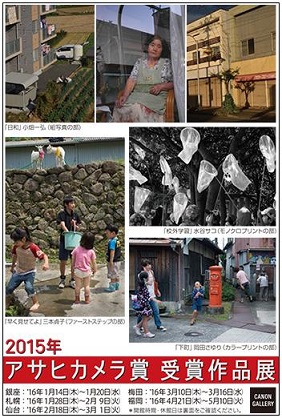The ruins of the warship training center
Location 6-20 Tsukiji, Chuo-ku
Today, the land around the central wholesale market was once the Edo shogunate warship training center.
In April 1857 (1857), due to the necessity of open sea voyage, the Shogunate gathered flagships, patrons, and other applicants to practice navigation and marine artillery training and driving warships purchased from the Netherlands. The school was named warship training center, and the president (Shogen Mukai, Kaishu Katsu, etc.) was appointed and appointed as a professor.
It was burned down in 1864 (1864) and temporarily relocated to the residence of Matsudaira Akimori next to the south, and was renamed the Naval Office in July 1866 (1866). In November of the same year, it was burned again and moved to the current Hamarikyu, and on the site, the Tsukiji Hotel Building, Japan's first style hotel, was built.
March, 1999
Chuo-ku Board of Education
The History of Kachidokibashi
In the battle of Meiji 378, the people of Kyobashi district, who are the Imperial Army, will set up a ferryboat here to commemorate the victory and donate it to Tokyo City, named Kachidoki no Watari.
In June 1933, Tokyo City started construction of a new Futaba movable bridge, and the incidental change occurred, but it was completed in June this year, that is, when it was named on the bridge, it was a long memorial to the Imperial Army victory.
December, 1940
Mayor Tokyo
Ryujiro Okubo's book
Kachidoki passing site (the later building is the Kachidokibashi Memorial Hall)
Location 6-20, Tsukiji, Chuo-ku
In 1892 (1892), "Tsukishima Pass" was opened between Ginza and Tsukiji and Tsukishima, but with the development of the Tsukishima side, traffic on both areas could not be handled by this alone. did.
In 1905 (1905), following the fall of Port Arthur fortress (northeastern China) in the Russo-Japanese War, volunteers from Kyobashi Ward set up a ferryboat named `` Kachidoki's handover '' and donated it to Tokyo City. The monument here is a monument built at this time. In front of the stone monument, there is "I of Kachi Toki", and on the side is engraved "January 38, 1938, Kyobashi District celebration party, Hino Tatenokyobashi District Doshikai".
The ferryboat of Kachidoki was located about 150 meters west of here near Namiwa Inari Shrine. The ferryboat on the opposite bank on the Tsukishima side was Tsukishima Nishikawashidori 9-chome (currently Kachidoki 1st and 3rd town borders). The ferry operated during this time.
Kachidoki's handover was used as an important means of transportation for residents and those who go to the Tsukishima factory, especially as it facilitated the concentration of the working population on Tsukishima, which led to the development of Tsukishima as an industrial zone.
After the Great Kanto Earthquake of 1923 (1923), a bridge movement occurred, and a movable bridge that jumped up when the ship passed was built. In June 1940, it was abolished with the opening of Kachidokibashi.
The name of Kachidoki's handover has been handed down to the bridge name and still retains its name.
March, 2004
Chuo-ku Board of Education
Kachidokibashi
Telecommunications Founding Land Monument
Tokyo Denshin Bureau Site
Started on December 5, 1912
Ministry of Communications
Origin of the Telegraph Foundation Monument
On September 19, 1869 (October 23, 1869), construction of a 32-kilometer telegraph line connecting the Yokohama Court and the "Denshinki Office" established in Tsukiji Unsho, Tokyo began operations on December 25, 1869. This is the first of public telecommunications in Japan.
This monument was erected in 1940 to convey the achievements of pioneers to future generations, and was relocated to this area in 1978 from a point about 40 meters south-southeast east.
Aktsuki Park Sieboldt bust
Siebold (1796-1866)
Philip Franz von Siebold arrived in Nagasaki in July 1823 as a Dutch trading house doctor, and was active in opening a private supplementary school in Narutaki, Nagasaki besides medical treatment.
On the New Year of the same year, he headed to Edo with the director of the trading house, stopped at Nagasakiya in Nihonbashi on March 4, and before leaving on April 12, interviewed Dutch scholars in Edo and had a great influence. However, after the Siebold incident occurred in 11 years, he was expelled from Japan in December. Later, he returned to Japan as an advisor to the Shogunate in 1859 (1859), but soon returned home and died in Munich.
His guidance in Edo was greatly contributed to the development of Edo Dutch studies. This land is the birthplace of Edo Dutch studies, and his daughter Ine, who received in Nagasaki, opened a maternity hospital in Tsukiji, and foreign settlements were established in this area from the early to mid-Meiji era. Therefore, he builds his bust here to reward his understanding of Japan and his achievements as a bridge between Japan and the Netherlands.
Chuo-ku Board of Education
Chuo Ward Local Tenmonkan
